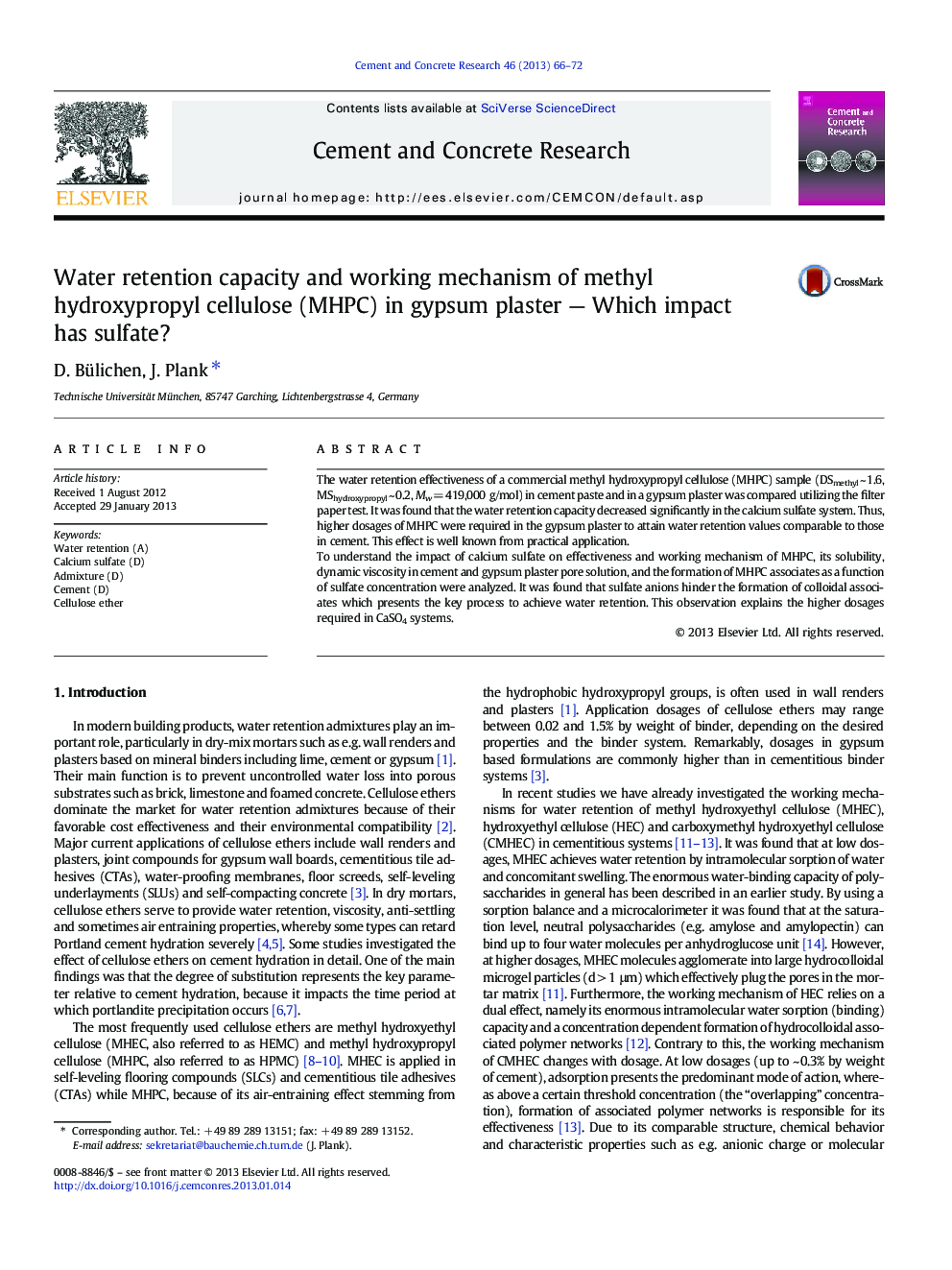| Article ID | Journal | Published Year | Pages | File Type |
|---|---|---|---|---|
| 1456575 | Cement and Concrete Research | 2013 | 7 Pages |
The water retention effectiveness of a commercial methyl hydroxypropyl cellulose (MHPC) sample (DSmethyl ~ 1.6, MShydroxypropyl ~ 0.2, Mw = 419,000 g/mol) in cement paste and in a gypsum plaster was compared utilizing the filter paper test. It was found that the water retention capacity decreased significantly in the calcium sulfate system. Thus, higher dosages of MHPC were required in the gypsum plaster to attain water retention values comparable to those in cement. This effect is well known from practical application.To understand the impact of calcium sulfate on effectiveness and working mechanism of MHPC, its solubility, dynamic viscosity in cement and gypsum plaster pore solution, and the formation of MHPC associates as a function of sulfate concentration were analyzed. It was found that sulfate anions hinder the formation of colloidal associates which presents the key process to achieve water retention. This observation explains the higher dosages required in CaSO4 systems.
